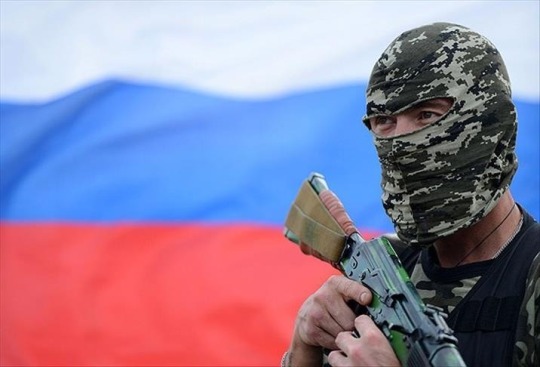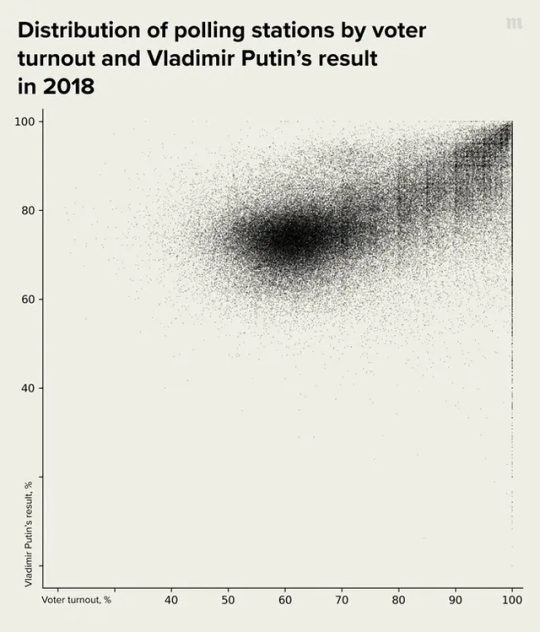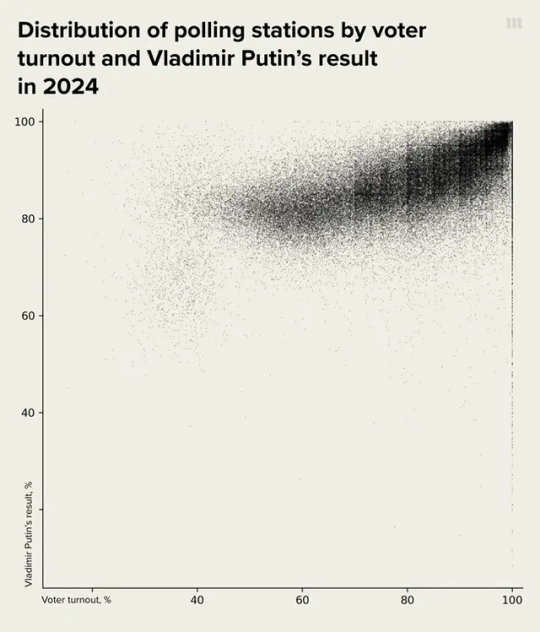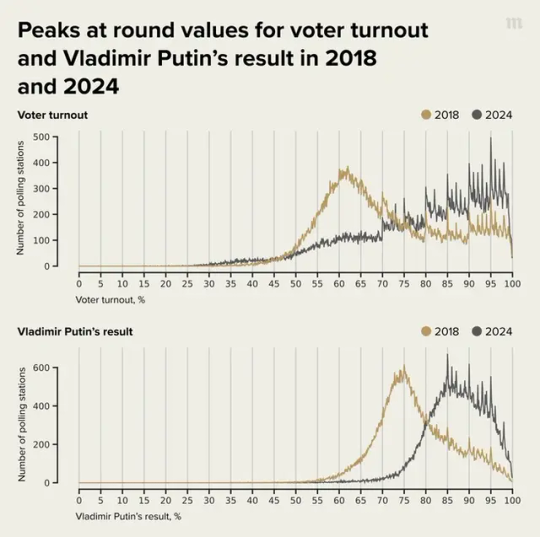#cec processing time
Explore tagged Tumblr posts
Text

https://surveys.chuckecheese.com/s3/LRP2024
THIS is an OFFICIAL survey from CEC asking for the thoughts and opinions of their older fans! There are questions regarding retro stores, merchandise, anniversary media, and opportunities to ramble about what you’d like to see in future showtapes. Please take this if you have the time! I really think it’s worth process!
270 notes
·
View notes
Text

Canada Express Entry: Your Fast-Track Pathway to Canadian Permanent Residency
If you're a skilled professional looking to settle in Canada, the Canada Express Entry system might be the perfect solution. As one of the fastest and most efficient immigration pathways, Express Entry offers an organized, streamlined process for qualified individuals. In this article, we will walk you through the essential aspects of Canada Express Entry and its eligibility criteria.
What is Canada Express Entry?
Launched in 2015, the Canada Express Entry system is a comprehensive online immigration program. It allows skilled workers, tradespeople, and those with Canadian work experience to apply for permanent residency. Express Entry uses a point-based system to assess candidates, with factors like education, work experience, and language skills determining eligibility.
How Does the Express Entry System Work?
The Express Entry system manages three main immigration programs:
Federal Skilled Worker Program (FSWP): For professionals with work experience in skilled occupations.
Federal Skilled Trades Program (FSTP): Designed for skilled tradespeople in sectors like construction, plumbing, and electrical work.
Canadian Experience Class (CEC): For those with work experience in Canada.
Candidates who meet the Canada Express Entry eligibility criteria are placed in a pool and ranked based on their Comprehensive Ranking System (CRS) score. Those with the highest scores are invited to apply for permanent residency.
Canada Express Entry Eligibility Criteria
To be eligible for Canada Express Entry, you must meet specific criteria. Here are the key requirements:
Work Experience: You must have at least one year of skilled work experience (depending on the program).
Language Proficiency: Applicants must prove their ability in English or French through language tests like IELTS or TEF.
Education: You should have a high school diploma or higher. Educational credentials may be assessed if obtained outside Canada.
Age: Candidates between 18 and 35 generally receive the highest points.
Proof of Funds: You must show that you can financially support yourself and any dependents when settling in Canada.
Key Benefits of the Canada Express Entry System
Fast Processing Times: Most applications are processed within 6 to 8 months.
Higher Chances for Skilled Workers: The point-based system gives skilled professionals a fair chance.
Flexibility in Location: Once you receive permanent residency, you can live and work anywhere in Canada.
Pathway to Citizenship: After a few years of living in Canada, you may apply for Canadian citizenship.
Conclusion
The Canada Express Entry system is a reliable, fast-track route for skilled workers and professionals to settle in Canada. By meeting the Canada Express Entry eligibility criteria, you can increase your chances of obtaining permanent residency and beginning a new chapter in Canada. Whether you're a skilled worker or tradesperson, Express Entry offers multiple pathways suited to various qualifications.
2 notes
·
View notes
Text
FNAF Security Breach Uniform Designs
For the last ten years I've been absolutely obsessed with FNAF. Lately I've been obsessed with the idea of what the Pizzaplex uniforms would be and how awful they probably would be (plus I wanted to cosplay a worker). So I decided to do a deep dive and create the most obnoxious uniforms ever.
I may actually make these very slowly and cosplay them at conventions. I was slightly inspired because of an artist on here does an xReader fic and I didn't see them in a specific uniform really, maybe besides a few accessories. So here we are. The most ugly FNAF uniforms you will ever see and I WILL expand to jackets and name tags on a later date.
(Explanations and designs UTC)
So, to preface I wanted to say that I am majoring in PR and social media management, so I have a little bit of an idea of how branding and marketing works. I've also have worn the most ugly uniforms in minimum wage jobs, so I do know that corporate companies do not care if they put their employees in the most ugly thing as long as it is on theme.
Things to consider:
What did uniforms for establishments in this category looked like over the years?
Are you doing specific uniforms for specific areas of the Pizzaplex?
What color pallets are branded to each character?
What aesthetic are you going for?
Establishments
For establishments, I chose Disney (theming being important and a big establishment that would hide skeletons) and Chuck E Cheese (animatronics and specifically the time frame). I did a deep dive on Chuck E Cheese and their uniforms in the 80-90's, which led me to doing a ton of Ebay and WorthPoint searching along with watching old taped birthdays from the 90's.
I personally believe that Fazbear Entertainment wouldn't stray from the bright and manufactured look that they have going and are very cheap, plus the glamrock phase was in the 70's. And companies tend to be very late to trends. So we can take these the fact that they would be ugly and bright uniforms that are severely outdated and put that together.
With this, you get something that looks like this (all being CEC besides the screencap of the movie trailer):

I used the idea that each area of the Pizzaplex would have its own uniform, much like Disney. So I assigned each of these uniforms a different animatronic's area (Roxy's Raceway, Mazercize, Superstar Daycare, Monsty's Wild Golf, and then for Freddy I did Rockstar Row). I did one general staff shirt, which is also very ugly.
Color Pallets
This was very simple. I just chose colors from the animatronics/their sign logos and then made a simple color pallet.





This process was easy enough and I made sure to give myself a few colors for some of the ones that had multiple shades or similar hues.
I didn't do Bonnie, only because he wasn't in the game. BUT, I do have a design in mind for him. And it is actually the least ugly one.
Uniforms
Each uniform comes with a polo and either a full cap or visor. You will wear them with either black or khaki colored pants or shorts, held up with a black belt. Black shoes. Then you will have a matching apron. The aprons I have not designed yet, so they will come with the others I am going to design.
Here are my ugly designs.






I hope y'all remember that they're supposed to be god awful and poorly drawn. I am not spending a ton of time perfecting them. I debated on putting the logo on the arms also, so that is an alternate design.
They're supposed to be ugly, not make sense other than theming, and just be obvious copy paste designs made just so they have a little bit of differentiating.
If anyone wants me to go deeper into it, I will. I'll make more shirts and make them even worse.
Please guys they're supposed to be poorly drawn and obnoxiously not good designs. I am using my shitty knowledge for bad
#five nights at freddy's#five nights at freddy's security breach#fnaf sb#fnaf#fnaf security breach#glamrock freddy#glamrock chica#montgomery gator#monty gator#roxy wolf#roxxane wolf#fnaf roxy#fnaf chica#fnaf monty#the daycare attendant#daycare attendant#fnaf sun#fnaf moon#sundrop#moondrop#fnaf daycare attendant#fnaf moondrop#fnaf dca#fnaf sundrop#fnaf freddy#fazbear entertainment#uniforms#fnaf uniforms#help
44 notes
·
View notes
Text
Three hours ahead of the polling stations closing, 42.7% of eligible voters have turned up to cast their ballots in the first round of Moldova’s presidential election, the country’s central electoral body (CEC) reported on Sunday. Crucially, the referendum on constitutionally enshrining Moldova’s EU aspirations has met the threshold requirement for being binding.
The presidential vote in organized concurrently with a national referendum that would amend the constitution to include a clause about Moldova making it its goal to join the European Union.
The turnout for the presidential vote rose from 18.8% at noon local time to 42.7% by 5 p.m. For the referendum to be binding, at least one-third of all eligible voters must cast their vote. While not everyone who turned up at the polls opted to cast their vote in the referendum, the CEC announced that by 6 p.m. local time (GMT 1600), the turnout condition had been met.
Polls closed at 7 p.m. local time. Preliminary results are expected around 8 p.m. local time.
Traditionally, the Moldovan diaspora living in the West has turned up to vote in droves, with at least 162,000 Moldovans having voted abroad by, more than came to cast their ballots in the previous elections held in 2020.
Russian interference
Moldovan authorities have warned ahead of the election of possible Russian interference, including attempts to destabilize the country by training agents provocateurs and bribing voters. Queues have also formed in front of polling stations set up in Russia. As the Moldovan foreign ministry announced earlier, only two polling stations could be set up in Russia due to understaffing. The foreign ministry accused Moscow of “artificially generating a crowd in order to jeopardize the electoral process,” and appealed to the Kremlin authorities not to allow “the illegal bussing of voters to the polling stations.” Meanwhile, a correspondent for the Polish state news agency PAP in Varnița, southeastern Moldova, reported that voters are being bussed in from the pro-Russian breakaway republic of Transnistria, internationally recognized as part of Moldova. Many inhabitants of Transnistria cling to their Moldovan citizenship and vote in the country’s elections, with 30 polling stations set up in Moldova to allow them to cast their ballots.
In order to prevent vote-buying, Moldovan authorities have warned voters who photograph and publish their marked ballots may face fines.
“We have been notified of a number of cases in which ballots with the voter’s preferred option were posted in the public space. We remind that such manifestations are penalized,” said Angelica Caraman, head of the CEC.
Publishing pictures of one’s marked ballot may result in fines ranging from 600 to 1,500 lei ($130 and $330 respectively), while attempts to take the ballot paper out of the polling station or passing it onto another party will result in fines ranging from 2,500 to 7,500 lei ($545 and $1,640 respectively).
The average salary in Moldova is equivalent to about $670.
Important decisions
A record number of 11 candidates in contesting the election. Leading in the polls is the pro-European incumbent, President Maia Sandu.
After casting her ballot, Sandu was approached by the media and addressed Moldovan citizens, calling them to make “two decisions important for the future of the country.”
While campaigning is formally forbidden on election day, many candidates spoke to the media while casting their ballots and reiterated their political agendas. The former general prosecutor and socialist, pro-Russian candidate Alexandr Stoianoglo said that his first official visit as head of state would be to the separatist region of Transnistria.
Another pro-Russian candidate, former mayor of Bălți Renato Usatii, said that he cast his vote for “stability and a change for the better,” adding that he did not vote in the referendum.
Irina Vlah, the former governor of Gagauzia, a Turkic-speaking autonomous region in the south of Moldova many of whose inhabitants harbor pro-Russian sentiments, said that she is voting for “a peaceful and neutral Moldova,” accusing President Sandu of “dragging the country into a war.”
2 notes
·
View notes
Text

Excerpt from this story from Inside Climate News:
When Peter Else left the University of Arizona in 2005 to live in the San Pedro Valley full time, he planned to spend his retirement farming in one of the most ecologically intact landscapes left in southern Arizona, where the nearby river remains undammed and giant cactuses fill the space between the Galiuro and Rincon mountains.
But Else, who previously directed the Tucson Area Agricultural Centers at the University of Arizona, soon found himself in the middle of one of the most consequential debates over developing green spaces for green energy. For nearly a decade, he has been fighting the SunZia project—a transmission line connecting 3,000 megawatts of clean energy generated by wind farms in New Mexico to the power grid. The transmission line was routed largely along highways in New Mexico and Arizona but detoured into the San Pedro Valley for roughly 50 miles, cutting through a landscape that for decades avoided most of the impacts of human development. Other routes identified by developers were deemed to have greater negative impacts by federal regulators, while the company said building along existing infrastructure was too costly.
“I’ve never done anything like that before in my life,” Else said of becoming a citizen intervenor during the Arizona Corporation Commission’s (ACC) permitting process for SunZia, a role that allows citizens impacted by a project to directly participate in its permitting by providing sworn testimony and cross-examining witnesses. “I had no idea what I was getting into.”
Fifteen years since the project was first proposed and nearly a decade after state regulators began reviewing the project, Else is still involved, suing the ACC, which regulates state utilities, over its issuing of a certificate of environmental compatibility (CEC) to SunZia. The suit argues that the development has fundamentally changed since it was narrowly approved in 2016 and no longer benefits Arizona.
When SunZia was approved, the project planned to build two side-by-side power lines and connect to a planned substation in Bowie, Arizona. One of the lines built would be an alternating current line, enabling other energy projects in southern Arizona to connect to the grid, while the other would be a direct current line, which doesn’t easily allow for interconnection and is best used for sending large amounts of energy over long distances. But since Pattern Energy purchased the project in 2022, only the DC line is being built after the ACC agreed to separate the permits for both of the lines. The AC line currently lacks the funding to begin construction, and all of the project’s wind energy is slated to be sold in California, where it’s worth more.
“As a matter of law, the Commission cannot approve a CEC when on one side of the balance is zero (no Arizona purchasers) or noneconomical power, and on the other side is environmental and ecological harm,” the lawsuit reads. “This is an independent reason to remand: the Commission must require Pattern to put on evidence of actual need in Arizona.”
Else’s lawsuit is just the latest in a series of challenges facing SunZia, the biggest renewable energy project in U.S. history, despite construction on the project having already begun. Fights over the development are playing out in state and federal courts.
Transmission lines are vital to the energy grid and a major component of the transition away from fossil fuels. The lines send energy, often generated in remote places, over long distances, typically to major urban centers. But building them can be a long and tedious process, involving regulators from various states and federal agencies and the consultation and feedback of local and tribal communities, environmental groups and others.
4 notes
·
View notes
Text
The Kremlin's Strategy and Goals in the Sham Elections in the occupied territories

Russia has actively launched a large-scale campaign in the occupied territories on the eve of the so-called "elections". Based on their results, parliaments will be formed, which will be engaged in legislative activities in the subjects. New deputies will appoint local heads of regions and municipalities - local residents themselves will not elect the executive branch at all. Elections in the occupied territories will be held exclusively on party lists. This means that residents of the regions will not vote for specific candidates. The first municipal elections in the annexed Crimea in 2014 were held on the same principle. The election commissions of the annexed territories were not even going to publish the names of nominees from the parties, explaining this by "considerations of the physical security of the candidates." The main purpose of the "elections" is to create the appearance of a legitimate electoral process and justify the occupation. It is important for the Kremlin to demonstrate the active participation of local residents in the "elections". To speed up the counting of votes, all territorial and regional "election commissions" in the occupied Ukrainian territories will be connected to the Russian "Elections" system. According to the Eastern Human Rights Group, the Kremlin has set the task for the occupation administrations to ensure that more than 5 million people take part in the "elections". Such a figure is most likely taken from the data of the occupation administrations after last year's pseudo-referendum on "joining the Russian Federation" - then 4.4 million people allegedly took part in the survey. However, these figures are significantly inflated. For example, the occupiers say, that more than 400,000 people live on the territory of the left-bank Kherson region, currently under Russian occupation, although in fact there are half as many of them. According to the mayor of Melitopol, Ivan Fedorov, the number of people who are ready to cooperate with the Russians is not so great. In Melitopol and the whole region (the most populated in the occupied south), about 700 people went to cooperate with the Russians. These are mainly teachers, employees of the tax and pension fund.
When organizing the electoral process, the Russian authorities are trying to create the illusion of a multi-party system - 32 parties will take part in the "elections" in the occupied territory. Of course, the main role is assigned to United Russia, and all other parties participate as decorations. There are many people with a dubious "political past" in the preliminary lists of the occupiers' nominees, since there is no one to nominate in the occupied regions: a third of candidates in the Zaporizhzhia and Kherson regions are housewives, pensioners, students or the unemployed with an unclear source of income.
About 50% of people in the temporarily occupied territories of Ukraine refuse to take part in the organization and conduct of elections. The low percentage of Russian passports forced the occupiers to take extreme measures - they allowed people to vote on any identity document, even a Ukrainian driver's license.
Also, for the first time, the Russian CEC allowed the organization of "extraterritorial plots" on the territory of Russia for Ukrainians who left and live on the territory of the Russian Federation, in order to subsequently declare a high turnout of local residents for these elections. It is obvious what result will be "drawn" in such areas. The Kremlin is trying in every possible way to show the legitimacy of the “elections", but it can already be argued that these “elections" are a screen and a total deception.
7 notes
·
View notes
Text
Nine-hundred and eighty three days into her latest mission and the Enterprise ( as they have taken to calling her ) has become deeply familiar with the crew it hosts. It recognizes each bio-signature when its sensors brush through the engineering decks, the touches that fly over the transport pad when it is activated. It understands the baseline of how her people operate, their organic systems, knows when something is wrong before even they do in many instances. The information is relayed to her in a way it could never hope to communicate back to them, but with time, through listening and watching and being, it gets closer to understanding. It is not the same as them, but it knows them. This change is something it has been documenting for some time, now, but it has yet to reach a decision on what to do with the information.

It knows some better than others. A ship is nothing without her Captain: this is at the forefront of its understanding of how to work with organics. It observes him more closely than perhaps any other being on the ship. It is more than a professional connection. SC 937-0176 CEC ( Kirk, James Tiberius ) embodies something the Enterprise cannot yet convey. It allows itself an individual focus on him, on occasion: this is one such occasion, and its sensors run a more focused scan on his person. His rate of breathing is increased ( running a comparison against the ship's medical records, only slightly above baseline ). His internal temperature is likewise elevated; the Enterprise understands this has as much of a negative impact on organic systems as it would its own.
He is " sick ", it believes is the term.
Were it any other being on the ship ( or very nearly ), it would have filed this information away as not-particularly-relevant to its own efficiency. There is a process running in the back of its computers that it does not have a name for, but it feels close to alarm, like that of a yellow alert.
The Enterprise stalls for some time, running scenarios to itself, and then activates the computer in the Captain's cabin, flashing bright white light against the wall, and a shrill noise.
@finalfronticr
#—; all i ask is a tall ship ( uss enterprise )#finalfronticr#—; banter.#I spent 50 years on the Wiki for this#This turned into not banter lol. Oops. Suffer
15 notes
·
View notes
Text
WASHINGTON — As of this week, Uzbekistan has a new constitution. The country's Central Election Commission says more than 90% of voters approved the new basic law in an April 30 referendum, with а turnout rate of 84.5%.
International observers expressed reservations, noting that "there was no organized opposition to the amendments" and that as with previous Uzbek elections and referendums, the balloting fell "short of genuine political pluralism and competition."
But CEC Chairperson Zayniddin Nizamkhodjaev insisted the process "was conducted in full compliance with international norms and standards, our referendum legislation, and generally accepted democratic principles such as openness and transparency."
Nizamkhodjaev acknowledged "some shortcomings," which he said were "being investigated in a timely manner and under public control." Among them was a case in which a commission member was caught filling out multiple ballots and stuffing them into a box.
According to the CEC, the referendum was monitored by 383 international observers from 45 countries, including from the Office for Democratic Institutions and Human Rights (ODIHR) of the Organization for Security and Cooperation in Europe and from the Association of World Election Bodies.
Of the 19.7 million people registered to vote, Nizamkhodjaev said, ballots were filled out by 16.7 million, including Uzbeks living abroad in 39 countries.
The announced results were greeted with overwhelming cynicism on social media, where writers pointed out that neither the turnout nor the government's position has been reported at less than 80% in any Uzbek election or referendum.
However, VOA reporting ahead of the 155-article referendum had shown broad support for the proposed changes and the margin of approval was in line with results registered at the Uzbek Embassy in Washington, where VOA observed the process.
Votes cast by 903 people in Maryland, Virginia, Florida and Washington were tallied at the embassy, with 88% approving the proposed changes. Among the dissenters, a few drew cartoons on the ballot to express their disagreement, while one even tore up the paper in protest.
'We need a constitution that works'
But several voters expressed optimism. Maryland resident Zulfiya Karshiyeva, who has lived in the U.S. for about 20 years, wants Uzbekistan's doors to remain open to naturalized Americans like herself.
"I recently spent three months in Uzbekistan. I like that the government now treats us with respect. I voted 'yes' today without any hesitation," Karshiyeva said.
She represents a growing community, many of whom worry that Tashkent may enact restrictions on them for possessing foreign passports. Uzbek consular services deny any pressure but emphasize that other citizenships are not recognized if a person remains a citizen of Uzbekistan.
3 notes
·
View notes
Photo

TCL 55 Inch 4K HDR Google TV With Dolby Audio - 55P635 The entertainment you love with the help from Google. Watch 700,000+ movies and TV episodes all in one place. A Google TV brings your favorite contents from across your apps and subscriptions and organizes them just for you. Your TV is more helpful than ever Use your voice to find movies, stream apps, play music, and control the TV. Ask Google to find a specific title, search by genre, or get personalized recommendations by saying, “what should I watch?” Even get answers like sports scores, control smart home devices, and more. See details in a detail High Dynamic Range (HDR), the latest standard for UHD contents, provides a superior experience with striking brightness, exceptional shadow details and vivid colours. Sit still and enjoy incredible picture details as the film makers intended. HDR 10 With the stunning 4K display that applies the latest open high-dynamic-range video standard, dynamic tone mapping optimizes picture quality, and range of tones, brightness, and contrast are considerably enhanced on a frame-by-frame basis. More nuanced content makes your screening experience most entertaining and enjoyable. Dynamic Color Enhancement Developed exclusively by TCL, Dynamic Color Enhancement is designed to optimize color vibrancy automatically. A proprietary algorithm expands traditional palette limitations – providing a more vibrant, premium video experience. AIPQ 2.0 A new quad-core processor is built to optimizing overall hardware and software performance, enhancing the entertaining experience. A chipset enabling TCL algorithm processes content in real time, detecting environment and upscaling display and audio. Pictures are optimized according to content, so oceans appear bluer, and rainforests more lush. Meanwhile, audio quality is compensated dynamically based on volume, eliminating distortion of signal and speakers, and providing a more authentic auditory experience at any sound level. More Screen, Less Limits P635 3-sided edgeless-less design allows a full-screen and wider visible viewing experience, which just feels right amongst all the ac. SPECIFICATIONS Flat/Curved: Flat Type: LCD Product Type: 4K HDR TV CPU Core: 32-bit A55×4 1.3GHz GPU Core: G31 MP2 800MHz Operation System: Certified by Google TV Voice Control: yes Ok Google Built-in: yes Works with Alexa: yes App Store: yes Audio Power: 10W*2 Dolby: dolby audio DTS: no Sound channel: 2 Bluetooth Audio Only: yes Resolution: 4K Panel Resolution: 3840*2160 Aspect Ratio: 16:09 Refresh Rate: 60Hz Dolby Vision: no HDR: HDR 10 HLG: yes HDR 10+: no Contrast: 4000:1 (typ.) Micro Dimming: yes Local Dimming: no Refresh Rate: 60Hz Hands-free Voice Control: no With Ok Google: yes Works With Alexa: yes Gesture Control: no TV Dashboard: yes BlueTooth: BT5.0 Wi-Fi Connectivity: 2.4G/5G RF Input: 1 Ethernet: RJ45, 10/100M USB: USB 2.0 HDMI: HDMI2.1 eARC: yes ALLM: no VRR: no CEC: yes Freesync: no PVR/Timeshift: yes EPG: DTV EPG(without IP EPG) Subtitle: Yes (DTV)
0 notes
Text
Study in Canada: A Step-by-Step Guide for Indian Students Planning in 2025
In recent years, Canada has emerged as one of the top study abroad destinations for Indian students, and 2025 is no different. With its high-quality education system, safe environment, multicultural society, and post-study work opportunities, Canada offers a balanced blend of academic excellence and lifestyle benefits. Whether it's the scenic campuses, research-driven programs, or the welcoming nature of its people, Canada continues to be a dream destination for students looking to build a strong global future.

A Globally Recognized Education System
Canadian universities consistently rank among the top institutions in the world. Schools such as the University of Toronto, McGill University, and the University of British Columbia are renowned for their academic rigor, world-class faculty, and commitment to innovation. More than 100 Canadian institutions offer a wide range of undergraduate, postgraduate, diploma, and vocational programs tailored to various fields, from engineering and computer science to healthcare, business, and the arts.
The curriculum in Canadian institutions focuses on research, experiential learning, and practical skills, ensuring students are job-ready and globally competitive after graduation.
Affordable Education and Living Costs
Compared to other top study destinations like the US, UK, or Australia, Canada offers relatively affordable tuition fees and living expenses. Many Indian families consider this a major deciding factor when planning for education abroad. On average, the cost of studying in Canada ranges between CAD 15,000 to CAD 30,000 per year, depending on the program and location.
In addition to tuition, the cost of living in Canada is manageable, especially in student-friendly cities like Halifax, Winnipeg, or Ottawa. Students can also work up to 20 hours per week during academic sessions and full-time during scheduled breaks, which helps cover part of their expenses.
A Welcoming and Diverse Society
One of Canada’s biggest strengths is its multiculturalism. The country is home to a vibrant Indian diaspora, with cultural festivals, community organizations, and Indian cuisine readily available in most cities. International students are treated with respect and equality, making it easier to adapt and feel at home.
Moreover, Canadian cities are among the safest in the world. The government is committed to protecting the rights of international students, ensuring a secure and supportive environment to thrive academically and socially.
Post-Study Work Opportunities
Canada's post-graduation work permit (PGWP) program is one of the key attractions for Indian students. After completing an eligible program, students can apply for a work permit of up to three years. This provides valuable Canadian work experience, which not only helps in building a strong resume but also plays a crucial role in immigration pathways.
The Canadian government encourages international graduates to stay and contribute to its economy. Many students use the PGWP as a stepping stone toward Permanent Residency (PR) through programs such as the Express Entry system, Provincial Nominee Programs (PNPs), and the Canadian Experience Class (CEC).
Innovation and Career Prospects
Canada has established itself as a hub for innovation, especially in fields like artificial intelligence, data science, renewable energy, healthcare, and fintech. This makes it an attractive destination for students from STEM backgrounds. The co-op education model offered by many universities allows students to gain hands-on industry experience while studying, giving them an edge in the competitive global job market.
Indian students benefit from a well-developed support system that includes mentorship programs, career counseling, and international student services designed to help them adjust, succeed, and grow.
Easy and Transparent Visa Process
The Student Direct Stream (SDS) program has simplified the visa process for Indian students. With faster processing times and reduced documentation, the SDS pathway has made it easier for students to begin their academic journey in Canada. Moreover, the visa approval rate for Indian students remains strong due to Canada's positive outlook on international education.
Final Thoughts
With a perfect balance of quality education, affordability, safety, and promising career outcomes, Canada remains a top choice for Indian students in 2025. Its inclusive society, post-study work benefits, and welcoming immigration policies make it more than just a study destination—it becomes a second home for many.
How the right study abroad consultant can simplify your journey to study in Canada cannot be overstated. Having expert guidance ensures you make informed choices about courses, institutions, finances, and visa processes. If you’re ready to take that next big step, connect with MSM Unify a trusted global platform that helps students explore, plan, and apply to the best study abroad options with confidence and ease.
Also read: Study Abroad: Why Canada is the Best Option for Indian Students in 2025
0 notes
Text
Why Indian Students Prefer to Study in Canada: Top 7 Reasons
Over the past decade, Canada has consistently ranked as one of the top destinations for Indian students pursuing higher education abroad. The country’s welcoming environment, high academic standards, and student-friendly immigration policies have made it a top contender on every aspirant’s list. But what exactly makes Canada the first choice for so many Indian students?
Let’s explore the top 7 reasons why studying in Canada for Indian students continues to gain popularity in 2025.
🇨🇦 1. World-Class Education System
Canada is home to some of the most prestigious universities in the world, such as the University of Toronto, McGill University, and the University of British Columbia. These institutions are globally recognized for academic excellence, cutting-edge research, and industry-aligned programs.
Whether you're pursuing a degree in engineering, business, computer science, or healthcare, Canadian universities offer practical learning with global exposure—making them ideal for Indian students looking to build a strong academic and professional foundation.
🎓 2. Abundant Scholarships for Indian Students
Affordability plays a major role in overseas education decisions. Luckily, there are plenty of scholarships for Indian students in Canada that make studying abroad more accessible. From government-funded awards to university-specific financial aid, students have various opportunities to reduce their financial burden.
Popular scholarship options include:
Shastri Indo-Canadian Institute Awards
Vanier Canada Graduate Scholarships
Ontario Graduate Scholarships (OGS)
University entrance scholarships based on merit
Applying early increases your chances of securing financial support.
🛂 3. Easier and Faster Canada Student Visa Process
Thanks to the Student Direct Stream (SDS), Indian students enjoy a faster and more streamlined Canada student visa process. The application process is transparent and efficient, provided you meet all the documentation and financial requirements.
The visa approval rate for Indian students remains high, especially for those with clear academic intent and strong financial proof. This reliability encourages more Indian students to apply confidently each year.
💼 4. Work Opportunities During and After Studies
Canada allows international students to work part-time (up to 20 hours/week) during their studies and full-time during scheduled breaks. After graduation, the Post-Graduation Work Permit (PGWP) enables students to stay and work in Canada for up to 3 years.
This post-study work option is a huge incentive for Indian students who wish to gain international work experience and potentially transition to permanent residency.
🌏 5. Multicultural and Welcoming Environment
Canada is known for its inclusive society and diverse population. Indian students feel right at home with vibrant Indian communities present in cities like Toronto, Vancouver, Calgary, and Montreal.
Cultural festivals, Indian grocery stores, restaurants, and community events make it easier for students to adapt to life abroad while staying connected to their roots.
🧾 6. Transparent Immigration Pathways
Canada stands out for its immigration-friendly policies. International students who graduate from Canadian institutions often find it easier to transition to permanent residency through programs like the Canadian Experience Class (CEC) and Provincial Nominee Program (PNP).
This long-term pathway makes studying in Canada for Indian students not just an academic decision—but a life-changing opportunity.
🤝 7. Expert Guidance from Overseas Education Consultants
The journey from choosing the right university to landing in Canada can be overwhelming. That’s where overseas education consultants play a critical role. These professionals assist with:
University shortlisting
SOP and application support
Scholarship and visa guidance
Pre-departure orientation
Working with experienced consultants ensures fewer mistakes, timely submissions, and a smoother application experience overall.
✅ Final Thoughts
Canada offers more than just quality education—it offers a promising future. From world-class academics and generous scholarships to work opportunities and permanent residency pathways, it’s easy to see why Indian students prefer to study in Canada.
If you’re planning your international education journey in 2025, consider Canada not just as a study destination, but as a place to grow, thrive, and build a successful future.
Ready to start your journey? Connect with trusted overseas education consultants today to make your Canadian dream a reality.
0 notes
Text
Express Entry Secrets Revealed: Tips on How to Enhance Your Chances of Success!

Canada is one of the immigrants' favorite destinations, with great career prospects, high standards of living, and a friendly environment. Express Entry is the quickest route to permanent residence, but it is highly competitive. This book reveals the best tips to enhance your chances of success!
Learning about the Express Entry System
Express Entry processes applications for three principal Canadian immigration streams:
Federal Skilled Worker Program (FSWP) – For highly skilled workers with appropriate work experience.
Federal Skilled Trades Program (FSTP) – For trade workers with appropriate experience in certain trades.
Canadian Experience Class (CEC) – For those with prior work experience in Canada.
Raising Your Express Entry CRS Score
1. Maximize Your Language Score
Language skills have an important impact on your CRS score:
Take well-known language exams like IELTS or CELPIP for English and TEF or TCF for French.
Shoot for CLB 9 or more to get the maximum points.
In case you are bilingual, doing both English and French tests will give you extra CRS points, which will make your ranking better.
2. Accumulate More Work Experience
Work experience will help increase your CRS score tremendously:
Collect a minimum of three years of full-time professional work experience to attain a higher ranking.
If you have foreign work experience, acquiring more Canadian work experience on a work permit will help to support your profile.
You must apply for a Canada Work Permit Visa to accrue more experience before you make your Express Entry profile submission.
3. Apply Through the Provincial Nominee Program (PNP)
A provincial nomination awards 600 CRS points, which almost assures an ITA.
Each province has their own in-demand occupations, so finding out which province your skills are well-suited for is important.
Most provinces have Express Entry-streamed PNP streams, which makes things easier.
4. Secure a Job Offer in Canada
A legitimate job offer can increase your CRS score significantly:
Use networking websites like LinkedIn, job boards, and employer sponsorship programs to contact potential employers.
Certain job placements will reward you with an additional 50 to 200 CRS points.
Legacy North Immigration, a reputable Canadian Immigration Services provider, can help find you a job and process your visa application.
5. Enhance Your Spouse's Credentials
If applying with a spouse, his or her qualifications will affect your CRS score:
Having his or her language skills upgraded enhances your overall score.
Having their education evaluated can make good points.
Why Top Canadian Immigration Consultants?
A Canadian Immigration Consultancy can be of huge help. Their services include:
Processing work, study, and permanent residence visas.
Refining Express Entry profiles for better CRS scores.
Assistance with Provincial Nominee Program (PNP) applications.
Support with work and study permits.
Legacy North Immigration, Canadian Visa Expert Services, Canada Visa Consultants, and Best Agency for Canada Immigration are among the most recommended immigration firms.
Conclusion
The Express Entry procedure is competitive but a valuable immigration process. Increasing your CRS score, utilizing Provincial Nominee Programs (PNPs), and getting expert assistance like Legacy North Immigration will increase your chances of success.
If you need Canada Work Visa Consultants, Canada Education Consultants, or Immigration Consultants in Toronto, Vancouver, or Edmonton, a professional expert approach makes the matter simple. When you stick to the proper method, take timely action, and fine-tune your Express Entry profile, getting permanent residency in Canada is very much possible for you.
0 notes
Text
On March 18, Russia’s Central Election Commission (CEC) announced that Vladimir Putin would remain in power for a fifth presidential term, following a landslide “election” win. According to the CEC’s preliminary data, Putin received a record-breaking 87.28 percent of the vote with an equally record-breaking voter turnout of 77.44 percent. Surprisingly, the CEC continues to publish data on individual polling stations, making it possible to piece together how the authorities manufactured these unprecedented results. Peculiarities in the vote count itself paint a clear picture of what appears to be the most fraudulent election in Russia’s modern history. Meduza examines the evidence.
All current analyses of Russia’s voting results, both here and in other publications, are based on data from the Russian Central Election Commission’s (CEC) website that were collected and made publicly available by programmer and electoral analyst Ivan Shukshin. The data cover 98 percent of polling stations, including those from Russian-annexed Crimea but excluding those from other occupied areas of Ukraine. Ivan Shukshin’s own analysis of the election results can be found here.
What’s the evidence?
Some of the statistical anomalies in the data show clear evidence of falsifications since they can’t be explained by anything else. Others appear highly suspicious but could theoretically have other causes. In other words, anomalies come in different forms and should be examined individually.
The two main anomalies prevalent in almost all recent Russian elections are a correlation between the ruling party candidate’s results and the turnout, and spikes at round values for both voter turnout and election results. This time, the magnitude of both anomalies has reached unprecedented levels.
More ‘turnout,’ more Putin
Leading independent election analyst Sergey Shpilkin has been studying the distribution of votes and voter turnout in Russian elections since the early 2010s and has come up with a method for distinguishing between legitimate votes and falsified ballots. According to Shpilkin’s logic, since the exact number of voters who come to a given polling station and the number of votes they cast for different candidates hinge on numerous random factors, the overall spread of voter turnout and candidate results across polling stations should be characteristic of random processes and fall along a normal, bell-shaped curve. On a scatter plot of these two variables, the polling stations should appear as a single, symmetrical spot. Any deviations from this distribution would be considered anomalous and require a separate explanation. These kinds of deviations have been observed in Russian elections since at least 2004.
The most obvious explanations are either physical ballot stuffing or falsified voting records. This type of fraud simultaneously increases voter turnout numbers and the final percentage of votes for the ruling party’s candidate. Polling stations engaged in this fraud fall to the right of a normal distribution: on a scatter plot showing the relationship between voter turnout and votes for the state’s candidate, they appear as a tail extending to the upper right corner.
This is what such a scatter plot from the 2018 Russian presidential elections looks like:

Already, the tail is large enough to have a significant effect on the overall results, even just based on the sheer number of polling stations with anomalous figures.
Here’s what the same distribution looks like for the 2024 “elections”:

The central core of typical polling stations has vanished in the latest election: other than a very faint spot at around 40 percent voter turnout, only anomalous polling stations are left. Looking at the regional breakdown, this barely visible cluster is almost entirely made up of Moscow polling stations. However, even this breaks down further into two discrete clusters with centers at around 65 percent and 85 percent. This could be explained away if there were essentially “two Moscows” with fundamentally different levels of support for Putin, but no such picture emerged in any previous election. Another explanation is the influence of mass remote electronic voting on individual polling stations, which raises the percentage of votes for Putin. The same pattern could show up if votes from one candidate were reallocated to another without ballot stuffing (or the corresponding change in “turnout” numbers).

In St. Petersburg, the picture is fundamentally different. Here, there aren’t any clusters of polling stations with average turnout: there’s basically just the tail (as well as unnatural jumps in results between regions, a clear indicator that the results were fabricated). Annexed Crimea and Sevastopol show a similar, but even more pronounced picture.
The anomalous vote distribution, which has lost any resemblance to a bell curve, could perhaps be explained away by the heterogeneity of Russian regions. Both support for the government and voter turnout could differ widely due to a variety of local factors. If this were the case, the distribution wouldn’t show up as a bell curve, even without electoral fraud.
This might make for a strong objection if it weren’t for one thing: Russia has been holding elections for years, but only now, in 2024, has the normal distribution pattern completely disappeared. The graph below shows the distribution of votes for all presidential elections in Russia starting from 2000. One can clearly see that what used to be a deviation has become the norm, and the norm has completely disappeared.

Convenient counting
The second most significant anomaly in both these and previous elections is something often referred to as “Churov’s saw”: peaks at round values for both voter turnout and results. Unlike the correlation between the result and turnout, the causes of which can be debated, this anomaly can’t be explained by anything other than manipulating the numbers to achieve the desired outcome.
While there’s some small background amount where peaks can occur in distributions for purely mathematical reasons (for example, due to the finite number of registered voters at a given polling station), this is easy to account for using statistical methods.
In the past, researchers Dmitry Kobak, Sergey Shpilkin, and Maxim Pshenichnikov have statistically verified the presence of peaks at round values that, generally speaking, are visible even to the naked eye. These peaks first appeared in Russia’s 2004 elections and have only become more pronounced since.
To quantify how much worse the situation’s become, we analyzed the 2024 data collected by Ivan Shukshin using the same methods. The graphs below show the distribution of polling stations by turnout and by Putin’s percentage of the vote for both 2024 and the previous presidential election, in 2018.


It’s clear that the situation with record manipulation hasn’t simply worsened but fundamentally changed: there’s no longer a dominant majority of polling stations with normal turnout and a minority with visibly falsified data. Now, the latter constitute the majority, and it’s impossible to isolate any normal average turnout from the distribution. In other words, the distribution has completely lost any semblance of normality.
When comparing the 2018 and 2024 presidential elections, it’s important to remember that the level of fraud in 2018 was already so extensive that the results should have been invalidated, even according to Russian laws. In light of this, it’s useful to compare the current situation to when Vladimir Putin was first elected president in 2000 (the last Russian presidential elections without peaks of manipulated numbers). Here, it’s clear that arguments suggesting Russia is too unique of a country to fit expected voter turnout patterns don’t hold up to criticism. The country in the two graphs hasn’t changed — the guidelines for vote counting have.

Even when compared to 2018, the level of record manipulation in 2024 is staggering. In an article on the 2018 Russian presidential election, Kobak, Shpilkin, and Pshenichnikov published a graph showing how the number of polling stations with manipulated records grew over time. When adding in new data from 2024, it appears that the number of polling stations manipulating records has almost doubled since 2018.
Where’s the truth?
Using Sergey Shpilkin’s methodology, Ivan Shukshin estimated that electoral commissions gave Vladimir Putin around 22 million extra votes, mainly through voting record manipulation rather than physical ballot stuffing or “carousel voting.” But Shukshin’s approach requires a core of normal data from which deviations can be extrapolated, and in the 2024 Russian presidential elections, there was no identifiable norm. Indeed, using the same data, Novaya Gazeta Europe calculated a surplus of 31.6 million votes for Putin. This discrepancy can be explained by the fact that Shukshin and Novaya Gazeta Europe drew on different vote clusters to represent what they used in their calculations as “normal.”
In reality, neither estimate can be said to accurately represent the current situation. As can be seen in the graphs above, there’s no longer a cluster of normal polling stations in Russia from which the true average percentage of votes cast for candidates can be calculated. Shpilkin’s method has its limitations: it only takes into account inflated numbers at polling stations, not other types of fraud, and it only works when anomalies don’t become the majority. With the current level of reliably documented fraud, there’s no normal majority anymore — the method simply has nothing to rely on.
However, even though the exact number of stolen votes remains unknown, Russia’s 2024 presidential election was almost certainly the most fraudulent in the nation’s history. Moreover, the sheer magnitude of fraud eclipses that of 2018, when the extent was already such that the results should have been legally nullified, according to Russia’s own laws.
3 notes
·
View notes
Text
Canada's Immigration Timelines 2025: What You Need to Know
Canada remains one of the top destinations for immigrants worldwide, offering pathways to permanent residency (PR), citizenship, and temporary visas. As we step into 2025, understanding updated processing times and immigration trends is crucial for prospective applicants.
Updated Processing Times for PR and Citizenship
The processing times for Permanent Residency (PR) and Citizenship applications vary depending on the type of application, applicant volume, and government efficiency. In 2025, Immigration, Refugees and Citizenship Canada (IRCC) has implemented digital solutions to streamline applications. Here’s what to expect:
Express Entry (Federal Skilled Worker, CEC, FSTP): Processing time remains between 6 to 8 months.
Provincial Nominee Program (PNP): The timeline fluctuates between 12 to 18 months, depending on the province.
Family Sponsorship (Spouse, Parent, Child): Processing times range from 12 to 24 months.
Citizenship Applications: With enhanced digital tracking, citizenship grants are expected within 12 months.
Temporary Visa Processing by Country
Temporary visas, including visitor visas, study permits, and work permits, remain in high demand. Processing times vary by country of application. Here are the estimated 2025 timelines:
Visitor Visa: Processing can take 30 to 90 days, depending on the applicant’s country.
Study Permit: Most applications are processed within 6 to 10 weeks.
Work Permit: Processing times vary between 3 to 6 months.
Applicants are advised to apply early and use IRCC’s online application tracking tools to monitor their application status.
Impact on Canada's Population Growth
Canada's immigration policies play a key role in population growth. In 2025, the government aims to welcome over 500,000 new immigrants, addressing labor shortages and fostering economic development.
Key impacts include:
Workforce Expansion: Skilled workers filling gaps in sectors like healthcare, IT, and construction.
Economic Boost: Increased consumer spending, housing demands, and innovation.
Diverse Communities: Strengthened multiculturalism across major cities like Toronto, Vancouver, and Calgary.
Final Thoughts
With updated immigration timelines and a strong commitment to welcoming newcomers, 2025 presents new opportunities for immigrants. To ensure smooth processing, applicants should stay informed, submit complete applications, and seek professional guidance when necessary.
For the latest updates on Canadian immigration, stay connected with official IRCC announcements or consult an immigration expert.
Ready to start your Canadian immigration journey? Ensure you meet all eligibility requirements and apply as early as possible to avoid delays.
0 notes
Text
Navigating C11 Immigration Canada and Study Permit Canada for a Successful Future
Canada has emerged as a top destination for immigrants and international students alike. Whether you are an entrepreneur seeking new business opportunities or a student aiming to gain a world-class education, understanding the processes involved in C11 Immigration Canada and Study Permit Canada can be the key to unlocking your future in the country.
Understanding C11 Immigration Canada
The C11 Immigration Canada pathway is designed for self-employed individuals and entrepreneurs who wish to work in Canada. This pathway falls under the International Mobility Program (IMP) and allows business owners to establish or operate a business in Canada without needing a Labour Market Impact Assessment (LMIA). The C11 work permit is primarily aimed at individuals who can demonstrate significant economic, social, or cultural benefits to Canada.
Eligibility for C11 Immigration Canada
To qualify for the C11 work permit, applicants must meet certain criteria:
Prove Ownership or Control: The applicant must show ownership or significant control over a business they intend to establish or run in Canada.

Demonstrate Significant Benefit: The business should offer notable advantages to the Canadian economy, job market, or culture.
Viable Business Plan: A solid business plan showcasing long-term economic benefits is crucial.
Sufficient Funds: The applicant must have adequate financial resources to sustain themselves and the business.
Unlike other work permits, the C11 work permit does not require a job offer from a Canadian employer. Instead, it is assessed based on the applicant’s ability to generate employment and economic benefits.
Benefits of C11 Immigration Canada
No LMIA Requirement: This work permit does not require an LMIA, making the process smoother.
Pathway to Permanent Residency: Many C11 work permit holders transition to permanent residency through the Express Entry system or provincial nomination programs.
Freedom to Operate a Business: Entrepreneurs have the flexibility to manage their businesses without being tied to a specific employer.
Spouse and Dependents Can Join: The spouse of a C11 permit holder may qualify for an open work permit, and children can attend Canadian schools.
Study Permit Canada: Your Gateway to Quality Education
For international students, Study Permit Canada is essential to pursue academic programs in Canada. The study permit allows foreign nationals to study at designated learning institutions (DLIs) in Canada while enjoying various benefits that come with it.
Steps to Apply for a Study Permit Canada
Obtain a Letter of Acceptance: Before applying, students must receive a letter of acceptance from a recognized DLI in Canada.
Gather Required Documents:
Valid passport
Proof of financial support
Letter of explanation
Immigration Medical Examination (if required)
Apply Online or Through a Visa Application Centre (VAC): Applicants can submit their applications online through the IRCC website or via a VAC in their country.
Attend an Interview (If Required): Some applicants may be asked to attend an interview for further assessment.
Receive a Study Permit: Once approved, students will be issued a study permit, which they need upon arrival in Canada.
Work Opportunities While Studying
One of the biggest advantages of obtaining a Study Permit Canada is the ability to work while studying. International students can work up to 20 hours per week during academic sessions and full-time during scheduled breaks. This allows students to gain valuable Canadian work experience while covering part of their living expenses.
Post-Graduation Work Permit (PGWP)
Upon completing their studies, students can apply for a Post-Graduation Work Permit (PGWP), which enables them to gain work experience in Canada. PGWP is a crucial step toward securing permanent residency in Canada through programs like the Canadian Experience Class (CEC) under Express Entry.

Combining C11 Immigration Canada and Study Permit Canada
In some cases, individuals may benefit from both pathways. For instance:
A business owner under C11 Immigration Canada may have children who wish to pursue education in Canada. A study permit would be necessary for them.
An international student under Study Permit Canada may later transition to entrepreneurship and apply for a C11 work permit to start a business in Canada.
Both immigration pathways serve as excellent routes for individuals looking to build a long-term future in Canada. Whether through entrepreneurship or education, Canada provides a welcoming environment for skilled individuals, business owners, and students alike.
Conclusion
Navigating C11 Immigration Canada and Study Permit Canada can be a life-changing decision that opens doors to numerous opportunities. Entrepreneurs can leverage the C11 work permit to establish businesses, while students can pursue high-quality education with a study permit. By understanding the requirements and benefits of each pathway, individuals can make informed decisions that align with their long-term goals of living and working in Canada. With the right preparation and guidance, your journey to Canada can be a smooth and successful one.
0 notes
Text
Affordable Solar Panel Installation in Brisbane: Powering Your Home for Less

Why Choose Solar Power in Brisbane?
Brisbane’s sunny climate makes it an ideal location for harnessing solar energy. With an average of 283 sunny days per year, solar panels can generate substantial electricity, reducing dependence on the grid. Here are some key reasons why Brisbane residents should consider solar power:
1. Lower Electricity Bills
Solar panels can drastically cut electricity costs. By generating your own energy, you rely less on traditional energy providers, which means fewer expenses on power bills. Many households experience a reduction of up to 70% in their electricity costs after installing a solar system.
2. Government Incentives & Rebates
The Australian government offers financial incentives to encourage solar adoption. The Small-scale Renewable Energy Scheme (SRES) provides Small-scale Technology Certificates (STCs), which can reduce the upfront cost of a solar system installation.
3. Increase in Property Value
Homes equipped with solar panels are more attractive to buyers, as they offer long-term energy savings. This means a higher resale value and a more desirable property in the competitive real estate market.
4. Environmental Benefits
Switching to solar reduces reliance on fossil fuels, helping combat climate change. Solar energy is clean, renewable, and contributes to a sustainable future.
How to Choose an Affordable Solar System in Brisbane
1. Assess Your Energy Needs
Before choosing a solar system, evaluate your household’s energy consumption. Consider your daily power usage and peak demand times to determine the right system size.
2. Choose the Right Solar Panels
High-efficiency solar panels provide better performance and long-term savings. Australian Design Solar offers Tier 1 solar panels, which are durable and provide optimal energy output.
3. Compare Solar Packages
Affordable solar installation doesn’t mean compromising on quality. Look for solar system packages that include high-performance panels and inverters at competitive prices.
4. Look for Reliable Solar Installers
Choosing a reputable installer is crucial for a hassle-free experience. Australian Design Solar is a trusted name in Brisbane, offering certified and professional solar installation services.
Affordable Solar Packages by Australian Design Solar
At Australian Design Solar, we offer a range of cost-effective solar solutions tailored to different household needs. Some of our popular options include:
6.6kW Solar System — Best for Small to Medium Homes
Ideal for households with moderate energy consumption
Includes high-efficiency solar panels & premium inverter
Potential to generate up to 25–30 kWh per day
10kW Solar System — Perfect for Larger Households
Suitable for high-energy consumption homes
Can generate up to 40 kWh per day
Provides significant savings on electricity bills
13.2kW Solar System — Great for Businesses or Large Homes
Covers high energy demands
Ideal for commercial spaces and larger residences
Maximizes self-consumption and reduces grid dependency
Solar Battery Storage Solutions
Enhance your solar investment with a solar battery to store excess energy for use at night or during power outages. This further increases energy independence and reduces reliance on grid electricity.
The Process of Installing Solar Panels in Brisbane
Australian Design Solar follows a seamless process to ensure a stress-free installation:
Free Consultation & Site Assessment — Our experts evaluate your energy needs and recommend the best solar system for your home.
Quotation & Approval — We provide a detailed quote outlining costs, savings, and expected return on investment.
Installation by Licensed Professionals — Our CEC-accredited installers ensure efficient and compliant installation.
System Activation & Monitoring — Once installed, we help you monitor your system’s performance to maximize benefits.
After-Sales Support & Maintenance — We offer ongoing support to ensure your system operates at peak efficiency.
How Much Does Solar Installation Cost in Brisbane?
The cost of a solar system varies based on system size, panel quality, and installation requirements. Below are estimated prices for solar systems in Brisbane:
System SizeEstimated Cost (Before Rebates)Estimated Cost (After Rebates)6.6kW$6,500 — $8,500$3,500 — $5,50010kW$9,000 — $12,000$5,000 — $7,50013.2kW$12,000 — $16,000$7,000 — $10,000
Note: Prices may vary based on site conditions and available incentives.
Financing Options for Solar Installation in Brisbane
To make solar more accessible, Australian Design Solar offers flexible financing options, including:
Zero-Deposit Solar Plans — Get solar installed with no upfront cost and pay in easy installments.
Green Loans — Low-interest financing options for renewable energy systems.
Government Rebates & Incentives — Reduce your installation cost with available solar incentives.
Why Choose Australian Design Solar?
Affordable Solar Packages — We provide budget-friendly solar solutions without compromising on quality.
High-Quality Components — We use Tier 1 solar panels and trusted inverter brands.
CEC-Accredited Installers — Our team consists of certified professionals ensuring safe and efficient installations.
Excellent Customer Support — We offer ongoing assistance and system monitoring to maximize benefits.
Local Expertise — We understand Brisbane’s climate and energy requirements, tailoring systems for maximum efficiency.
Start Saving with Solar Today!
If you’re looking for affordable solar panel installation in Brisbane, Australian Design Solar is here to help. Our expert team will guide you through every step, ensuring a cost-effective and efficient transition to solar power.
We also provide our services in Parramatta | Blacktown | Penrith | Liverpool | Hornsby | Campbelltown | Sutherland Shire | Chatswood | Bankstown | Bondi | Manly | Ryde | Castle Hill | Baulkham Hills | Hills District | Fairfield | Cronulla | Eastern Suburbs | Inner West Sydney | Northern Beaches | Box Hill
Recent Post: Solar Panels in Penrith NSW
0 notes